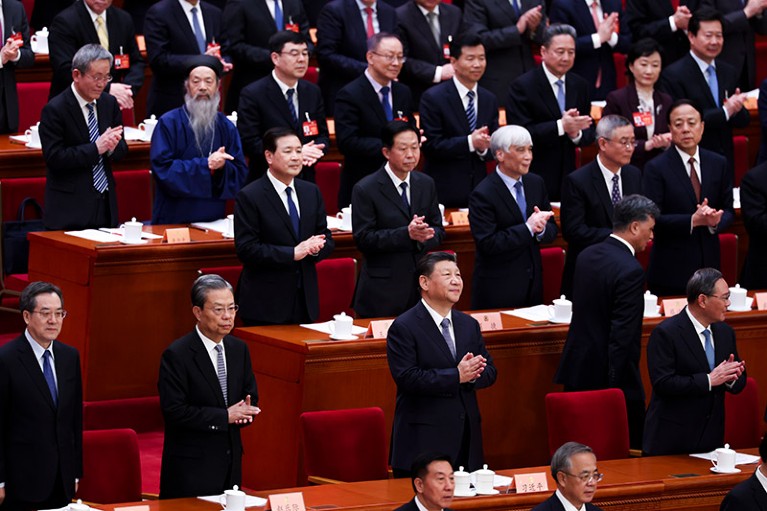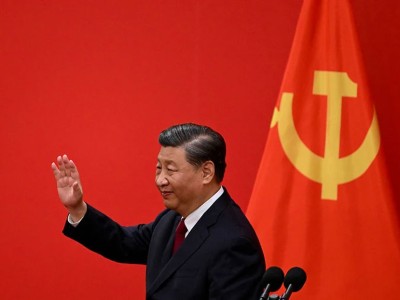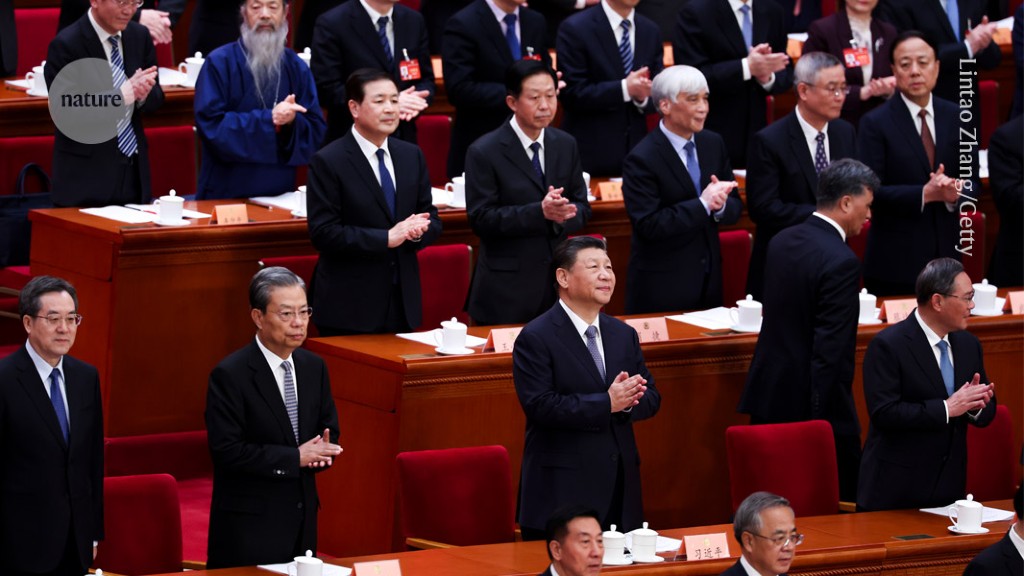[ad_1]

President Xi Jinping at the opening of the second session of the 14th Chinese People’s Political Consultative Conference.Credit: Lintao Zhang/Getty
China’s spending on science and technology is set to rise this year, despite the country’s sluggish economic growth.
The government will spend 371 billion yuan (US$52 billion) on science and technology in 2024 — a 10% increase compared with the previous year — according to a draft budget report by China’s Ministry of Finance. The report was submitted at the annual meeting of the country’s legislative body, the National People’s Congress, this week. Of the total government spending, 98 billion yuan will go to basic research, an increase of 13%, according to the report.
“The government is showing that it is committed to giving scientists more resources to support their research,” says Albert Hu, an economist at the China Europe International Business School in Shanghai.
The increase in government spending on science and technology is the largest in five years, says Jing Qian, who heads the Asia Society Policy Institute’s Center for China Analysis in New York City. With a drop of 9% in 2020, followed by two years of stalled growth, the government increased its spending by 2% last year.

What Xi Jinping’s third term means for science
The latest boost demonstrates the government’s “genuine commitment to its priorities”, says Qian. China has elevated science on the national agenda in recent years. Li Qiang, the premier of the State Council, reiterated that commitment in the written congress report presented at the opening session on 5 March. “We will move faster to boost self-reliance and strength in science and technology,” states the report.
Economic boost
The increase in money for science comes as the economy is struggling to meet growth targets. “China is in the midst of a structural transition,” says Hu. The country is moving from an economy based on long-established sectors such as real estate, to a greater emphasis on high-tech development, he says.
A race for technological supremacy with the United States is another motivating factor, say researchers. The United States has restricted China from accessing key technologies in areas such as artificial intelligence, semiconductors and quantum computing. This has spurred the country to invest in technological self-reliance, says Marina Zhang, who studies innovation with a focus on China at the University of Technology Sydney in Australia. “To win this game, China has to invest in science and technology, especially in basic research,” says Zhang.
Although the increased spending “represents a bigger commitment by the government towards science and technology”, it is still only a small fraction of the country’s total research and development expenditure, says Hu. Government spending accounts for around 11% of the 3.3 trillion yuan spent on R&D in China, according to official figures. R&D spending currently makes up about 2.6% of China’s overall gross domestic product; the corresponding figure in the United States in 2020 was 3.6%.
The congress session ends on 11 March and will be followed by a meeting of China’s political advisory body, the Chinese People’s Political Consultative Conference, next week.
[ad_2]
Source Article Link

